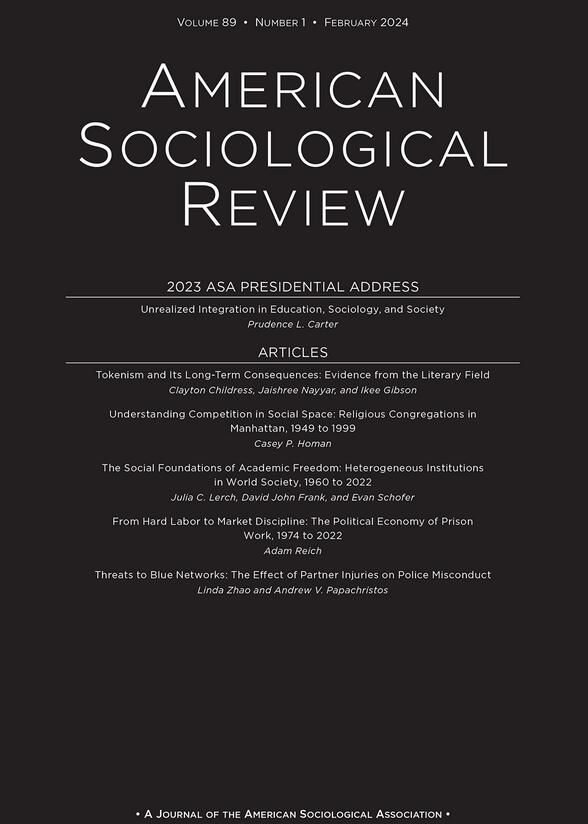什么类型的新奇事物最具破坏性?
IF 6.2
1区 社会学
Q1 SOCIOLOGY
引用次数: 10
摘要
新颖性和影响力是科学企业的关键特征。科学变革的经典理论区分了不同类型的新颖性,并强调新思想如何与以前的工作相互作用,并影响未来的知识流动。然而,即使是最近开发的新颖性衡量标准仍然是一维的,对引文计数的持续依赖只反映了科学影响的数量,而不是性质。为了更好地协调理论和实证工作,我们关注不同类型的新颖性(新结果、新理论和新方法),以及科学成果是否具有巩固的影响力(重新关注基础思想)或破坏性的影响力(促使后来的学者忽视它们)。通过将科学网的数据(衡量影响的性质)与引文经典作者的论文(衡量新颖性类型)相结合,并将计算文本分析与统计分析相结合,我们展示了新颖性类型与科学影响性质之间清晰而稳健的模式。正如预期的那样,新方法往往更具破坏性,而新理论往往破坏性较小。令人惊讶的是,新的结果并没有对科学影响的性质产生强有力的影响。本文章由计算机程序翻译,如有差异,请以英文原文为准。
What Types of Novelty Are Most Disruptive?
Novelty and impact are key characteristics of the scientific enterprise. Classic theories of scientific change distinguish among different types of novelty and emphasize how a new idea interacts with previous work and influences future flows of knowledge. However, even recently developed measures of novelty remain unidimensional, and continued reliance on citation counts captures only the amount, but not the nature, of scientific impact. To better align theoretical and empirical work, we attend to different types of novelty (new results, new theories, and new methods) and whether a scientific offering has a consolidating form of influence (bringing renewed attention to foundational ideas) or a disruptive one (prompting subsequent scholars to overlook them). By integrating data from the Web of Science (to measure the nature of influence) with essays written by authors of Citation Classics (to measure novelty type), and by joining computational text analysis with statistical analyses, we demonstrate clear and robust patterns between type of novelty and the nature of scientific influence. As expected, new methods tend to be more disruptive, whereas new theories tend to be less disruptive. Surprisingly, new results do not have a robust effect on the nature of scientific influence.
求助全文
通过发布文献求助,成功后即可免费获取论文全文。
去求助
来源期刊

American Sociological Review
SOCIOLOGY-
CiteScore
13.30
自引率
3.30%
发文量
35
期刊介绍:
The American Sociological Association (ASA) is a non-profit membership association established in 1905. Its mission is to advance sociology as a scientific discipline and profession that serves the public good. ASA is comprised of approximately 12,000 members including faculty members, researchers, practitioners, and students in the field of sociology. Roughly 20% of the members work in government, business, or non-profit organizations.
One of ASA's primary endeavors is the publication and dissemination of important sociological research. To this end, they founded the American Sociological Review (ASR) in 1936. ASR is the flagship journal of the association and publishes original works that are of general interest and contribute to the advancement of sociology. The journal seeks to publish new theoretical developments, research results that enhance our understanding of fundamental social processes, and significant methodological innovations. ASR welcomes submissions from all areas of sociology, placing an emphasis on exceptional quality.
Aside from ASR, ASA also publishes 14 professional journals and magazines. Additionally, they organize an annual meeting that attracts over 6,000 participants. ASA's membership consists of scholars, professionals, and students dedicated to the study and application of sociology in various domains of society.
 求助内容:
求助内容: 应助结果提醒方式:
应助结果提醒方式:


